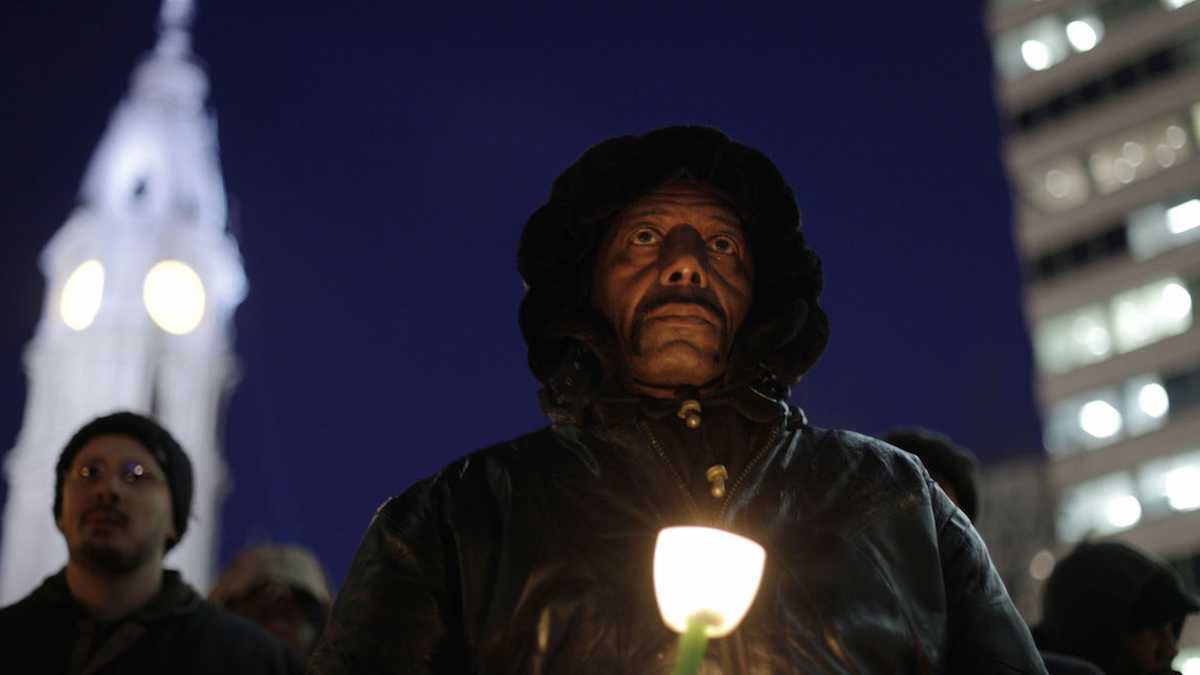Is Philadelphia doing enough for its homeless population?

Larry Bailey
“Salaam aleikumm,” said the man ceremoniously, as I sat late at night composing verses. The standing streetlamps of Clark Park faintly illuminated the scattered scratchings on my notepad.
“Aleikumm al salaam,” I replied.
He approached me tentatively, with restraint, as if to reserve his comfort until he knew who he was addressing.
“I don’t mean any disrespect,” he prefaced. I was sad to think he was afraid that simply greeting a fellow human being might be considered disrespectful. I shook my head and asked him with my eyes to continue.
Perhaps he needed a sum of change. Or maybe he asked me to accompany him to buy a small meal or a cup of coffee, or to help him get on the el, or for help getting back to Jersey. Or he could have unfolded a more detailed narrative of a recent hospital stay, supported by documentation he had prepared to convince me he was telling the truth. I cannot say. When we parted, he joined the countless others in my mind with whom I have briefly interacted as part of daily life in West Philadelphia. He was nameless.
Making improvements, but not enough
On one level, the discussion of homelessness in Philadelphia has already been labored; on another, it has hardly even been addressed. Last year, Keystone Crossroads reported that, while rates of homelessness are declining nationwide, they are on the rise in Philadelphia. Also in 2015, PHL17 found that 50 percent of U.S. cities are expected to follow the rising trends here.
The same study found that “70 percent of Philadelphians making low incomes cannot meet their housing expenses,” and that about 20 percent of single male/female homeless in Philadelphia are not able to afford housing, despite being employed.
According to Project HOME, “at a given point in time, the City estimates we have an average of 650 people living on the streets, 300 of whom are in Center City.”
Philadelphia’s efforts to resolve this situation have had some notable successes. Last December, Mayor Nutter announced that, since August 2013, 1,390 Philadelphia veterans had been connected to permanent housing.
Where does this leave the rest of Philadelphia’s homeless population? The city’s government does contain an Office of Supportive Housing, which offers prevention, emergency services, and long-term housing. Otherwise, the majority of the work of homelessness relief in the city has been shouldered by nonprofit organizations such as Bethesda Project, Covenant House, and the aforementioned Project HOME.
I have worked with the first two of these charities and greatly support them, along with any organizations that seek to quell the corrosive effects of homelessness and poverty. Special acknowledgement should also be paid to unique programs such as One Step Away, which offers an innovative, workable solution to the problem while also producing an impressive outlet for independent journalism.
However, looking at the rising trends leads one to believe that these facilities are not doing enough to make significant changes. In “2015’s Cities with the Highest and Lowest Populations in Need,” WalletHub ranked Philadelphia 137th in a list of 150 American cities in terms of “economic well-being” and “health and safety.” The study also notes Philadelphia as having one of the highest “food insecurity rates,” ranking 147th out of 150 cities.
With such a bleak position on that scale, it is reasonable to ask: What are the cities that rank highest doing differently?
Ideas worth stealing
The highest overall ranking in the study is given to Fremont, California, with the lowest child-poverty rate and second-lowest adult-poverty rate (after Overland Park, Kansas). To begin with, upon cursory research of resources for the homeless in that area, one finds immediately that the opportunities provided by the municipal and state governments are greater in number and more easily accessible. As Occam’s razor suggests, all other things being equal, the simplest answer is the likeliest.
2-1-1, a number which directs the caller to any facilities throughout the United States offering assistance with “food, housing, employment, counseling, health care, and more” is prominently advertised to residents of Fremont. As Philly.com reported, this widespread social service hotline was only recently adopted in Philadelphia in the wake of Hurricane Sandy. Fremont’s citizens are also readily directed to their local branch of United Way, as well as the Department of Social Services and Employment Development Department, all listed in a clear and convenient online index. To a Philadelphian, it appears that the rehabilitation agencies that are available are somewhat hidden from view.
Next, it is necessary to consider overall economic factors. The California state minimum wage is $10 per hour, with a poverty wage for a single adult calculated at $5 per hour; Philadelphia’s poverty wage is the same, while our state’s minimum wage is the federal minimum of $7.25. Even with this relatively high wage resulting in greater economic stability, Californians have also pushed for $15. The state announced this month that it will begin enacting an increase to reach $15 by 2022.
In addition, Fremont’s unemployment rate, estimated at 3.5 percent, is nearly half that of Philadelphia’s 6.5 percent. It should also be noted that these figures do not take into account rates of underemployment, or unemployed who are not actively seeking jobs.
Certainly the solution is not clear-cut, and it is not immediately in sight. But the longer it is neglected, the more difficult it becomes to neglect. Let us hope that greater action will accelerate our recovery.
WHYY is your source for fact-based, in-depth journalism and information. As a nonprofit organization, we rely on financial support from readers like you. Please give today.

